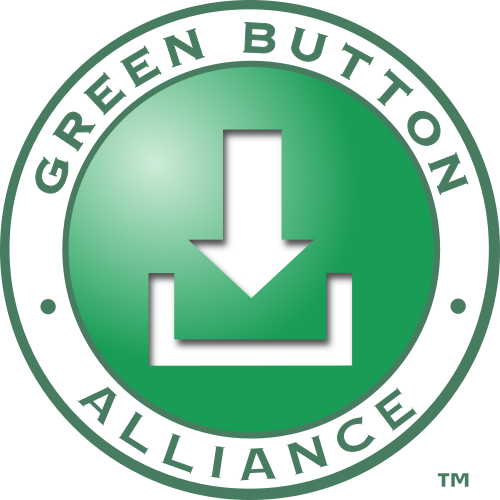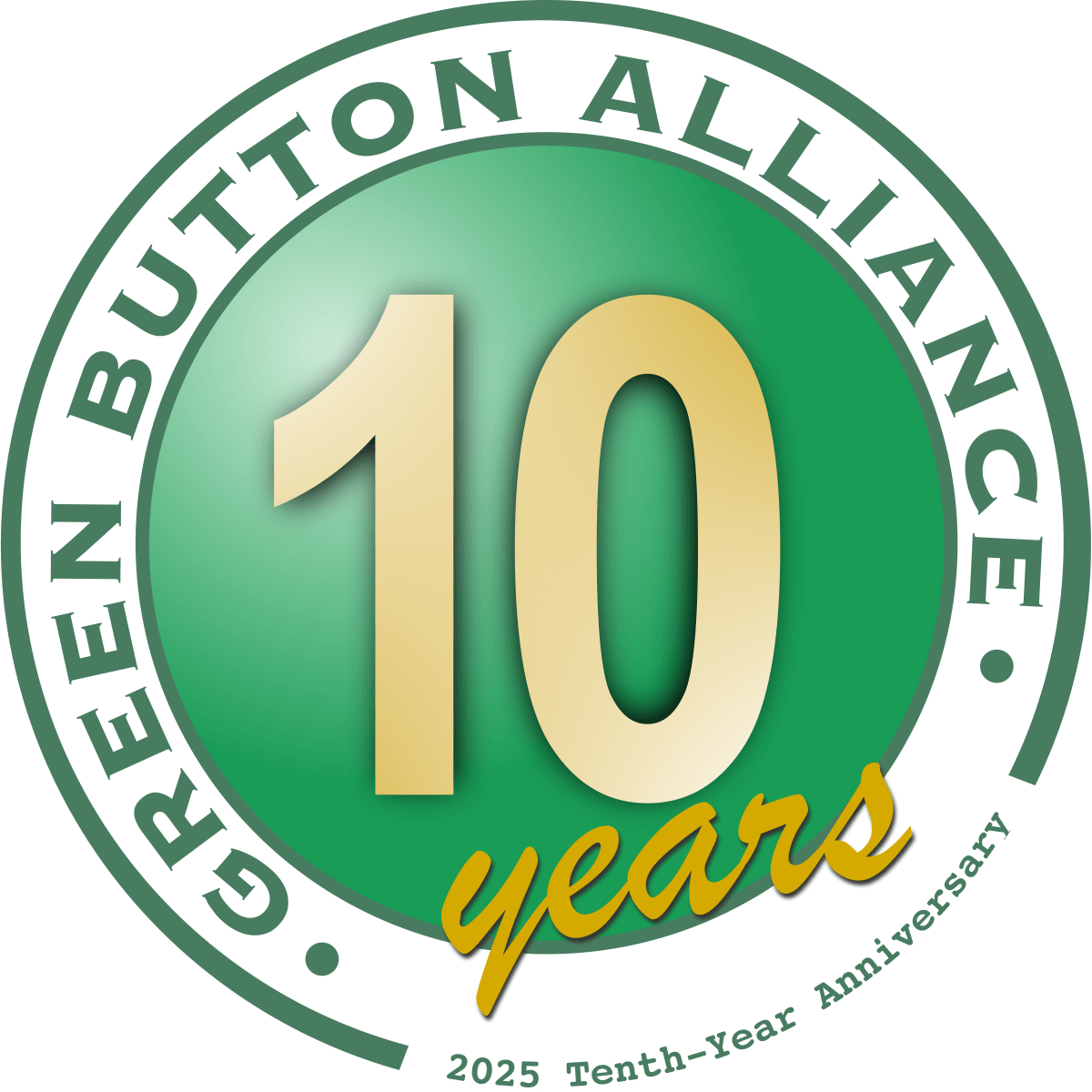Frequently Asked Questions
Non-Technical FAQs
These non-Technical Frequently Asked Questions (FAQs) are some questions the GBA receives from Utility representatives, Third Party developers, Customers of both, and commissions and consumer advocates.
For more-technical information, see Technical FAQs and Developer Resources.
The Green Button initiative is an industry-led effort to respond to a White House call-to-action to provide electricity customers with easy access to their energy usage data in a consumer-friendly and computer-friendly format. The Green Button now also supports Natural Gas- and Water-use data in-addition to Electricity; plus many other things.
Green Button platforms are where energy information is found—whether hosted at a Utility, an Aggregator, or perhaps even from the software that interfaces to a solar array.
Check with your electricity, natural gas, or water Utility to see if they have implemented the Green Button data-download or data-connect sharing methods.
If your utility does not-yet provide the Green Button, let us know—and let them know that you want it. The Green Button Alliance is here to help make Green Button solutions available to everyone.
The Green Button effort was created with the support of:
- the U.S. Department of Energy (DOE),
- the National Institute of Standards & Technology (NIST),
- the Smart Grid Interoperability Panel (SGIP),
- the Utility Communications Architecture International Users Group (UCAIug), and
- the White House.
The North American Energy Standards Board’s Energy Services Provider Interface (NAESB REQ.21 ESPI standard) serves as the basis for Green Button technology by providing a model for business practices, use cases, and and how the standards work together (see the next FAQ for a list of those standards).
The answer is twofold: Awareness & Mitigation
Awareness:
To enable end-users (consumers of electricity, natural gas, and water) to change behaviors associated with usage, those end-users must be aware of their use and their patterns of use. To do that, they need access to their usage data. Once they have access, they can take action to reduce their overall usage; determine if solar might be right for them; allow companies and apps to assist in understanding where improvements (e.g., insulation, UV glazing, new appliances, LED lighting, low-flow showerheads) may be able to help them; and even be able to save money where time-of-use (TOU) pricing for electricity provides incentives for off-peak shifting of energy consumption.
Mitigation:
Aside from the end-users’ benefits, there may be societal and environmental benefits to these reductions and peak-shaving actions, where climate-change mitigation starts from measuring one’s impact in order to begin making those changes—whether manually or by automation. Enough collective shifting of use from peak hours of the day may enable a utility to avoid the use of diesel generators to make up the difference. That may reduce costs for the utility and reduce charges to the end users—all while benefiting the environment.
Take a look at our Green Button Connect My Data page to learn more about the benefits of Green Button CMD to utilities and utility customers.
Utilities don’t typically gather circuit-level usage data from the building side of the meters (beyond the meter, from their perspective). Thus, to receive the circuit-level interval data, sensors need to be connected to the circuits or smart circuit breakers be used. Those are usually feeding data back to a software system and that software system could produce Green Button data for the building owners/operators.
- Green Button is not a platform, it is an enabling technology.
- Green Button is not a set of algorithms and code, it is a format and transit specification.
- Green Button is not a set of rules for what must be shared, it is an enabler of interoperability options — to be chosen by jurisdictions around the world for their particular use; whether in Canada, Korea, the Unites States, or anywhere else it has been implemented.
As noted in the previous FAQ: data can be “tagged” with a Quality of Reading indicator.
Applications, or “apps,” are available from multiple vendors to help homeowners, renters, business owners, and others reach their goals—whether the goal is to install solar, “go net-zero,” shave peak costs in regions with time-of-use (TOU) pricing, reduce environmental footprints, or to simply understand how one property in a portfolio compares to another.
Look to the Green Button Alliance membership for solutions or look to our Green Button Directory Services℠, released in September 2024, for a growing list of Third Party providers of apps and solutions.
Green Button was designed, from the start, to be very flexible (it can report electricity, natural gas, water, propane, steam, sewerage, methane, … and much more — see those below in “Electricity & Natural Gas; what else?”).
The idea was to ensure it was not too prescriptive: let utilities provide the data that they can; rather than make it so hard to implement that no utility would. Further, different jurisdictions have different needs for their constituencies. Green Button allows public-utility commissions to choose the ideal selection of features for their needs.
Early implementations (before 2015) were built to the standards but there was no entity testing those implementations, so some were better than others. The Green Button Alliance was formed in 2015 to help utilities create Green Button platforms for their customers and to help them meet the standards in doing so. Our DMD Certification program launched later that year and our CMD Certification program launched at the end of 2019. Due to the covid-19 pandemic, many utilities were slow to go through the Certification process but by the end of 2023 there were over 100 Certified implementations.
To find Utilities offering Green Button to their Customers, look to our Green Button Directory Services℠, released in September 2024.
Additional Utility Resources:
- Electricity (primary metered)
- Electricity (secondary metered)
- Electricity (transmission “metered”)
- Natural Gas
- Steam
- Drinkable Water(potable)
- Reclaimed water (gray, irrigation, non-potable)
- Waste Water (sewerage)
- Propane (C3H8)
- Heating Fluid
- Cooling Fluid
and it isn’t all liquids and gasses:
- Trash (refuse)
- Television (license)
- Communication (infrastructure)
- Internet Service
There are also non-commodity measurements:
- Insulative Gas
- Insulative Oil
and here are eight very-important eco measurements:
- Carbon
- Carbon Dioxide (CO2)
- Hexachlorocyclohexane (HCH)
- Methane (CH4)
- Nitrous Oxides (NOX)
- Perfluorocarbons (PFC)
- Sulfur Dioxide (SO2)
- Sulfurhexafluoride (SF6)
There’s also consideration in our technical committee to include additional commodity/resources, like Hydrogen, Petrol/Gasoline, and Diesel; as well as other greenhouse-gas information, including provenance of energy sources.
Green Button is an ever-growing and -enhancing set of standards and anyone — GBA Member or not — can participate in our technical committee to drive the standards to the next level.
More FAQs are coming soon.
Button Colors
Aren’t there other button colors out there? How do they relate to Green Button?
The Blue Button was first to “let you go online and download your health records so you can use them to improve your health, have more control over your personal health information and your family’s healthcare.”
(HealthIT.gov, retrieved 2016-03-03)
For more-technical information, see Technical FAQs and Developer Resources:



